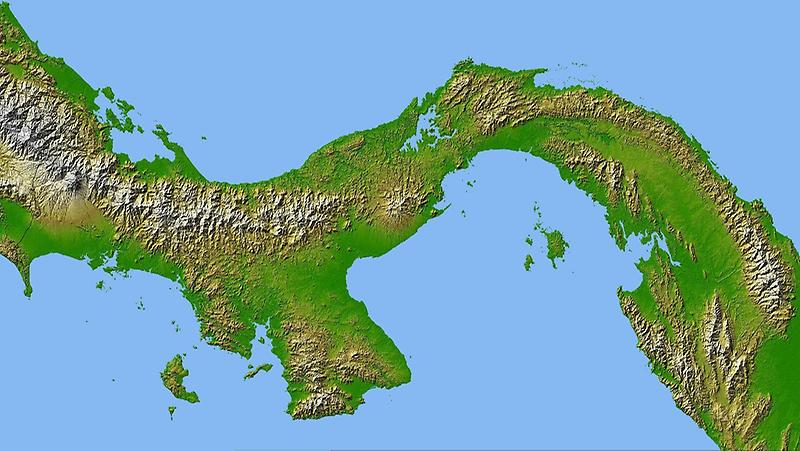The Isthmus of Panama #

By about 3 million years ago, an isthmus had formed between North and South America. (An "isthmus" is a narrow strip of land, with water on either side, that connects two larger bodies of land.) Scientists believe the formation of the Isthmus of Panama is one of the most important geologic events to happen on Earth in the last 60 million years.
Even though it is only a tiny sliver of land, relative to the sizes of continents, the Isthmus of Panama had an enormous impact on Earths climate and its environment. By shutting down the flow of water between the two oceans, the land bridge re-routed currents in both the Atlantic and Pacific Oceans. Atlantic currents were forced northward, and eventually settled into a new current pattern that we call the Gulf Stream today.
With warm Caribbean waters flowing toward the northeast Atlantic, the climate of northwestern Europe grew warmer. (Winters there would be as much as 10 degrees C colder in winter without the transport of heat from the Gulf Stream.) The Atlantic, no longer mingling with the Pacific, also grew saltier. Each of these changes helped establish the global ocean circulation pattern we see today.
In short, the Isthmus of Panama directly and indirectly influenced ocean and atmospheric circulation patterns, which regulated patterns of rainfall, which in turn sculpted landscapes. This false-color image of Panama was made using data acquired in February 2000 by the Shuttle Radar Topography Mission (SRTM), flying aboard the Space Shuttle Endeavor.
High-quality satellite imagery of Central America is generally difficult to obtain due to persistent cloud cover in the region. The ability of SRTM to penetrate clouds and make 3-D measurements allowed scientists to produce this complete high-resolution topographic map.